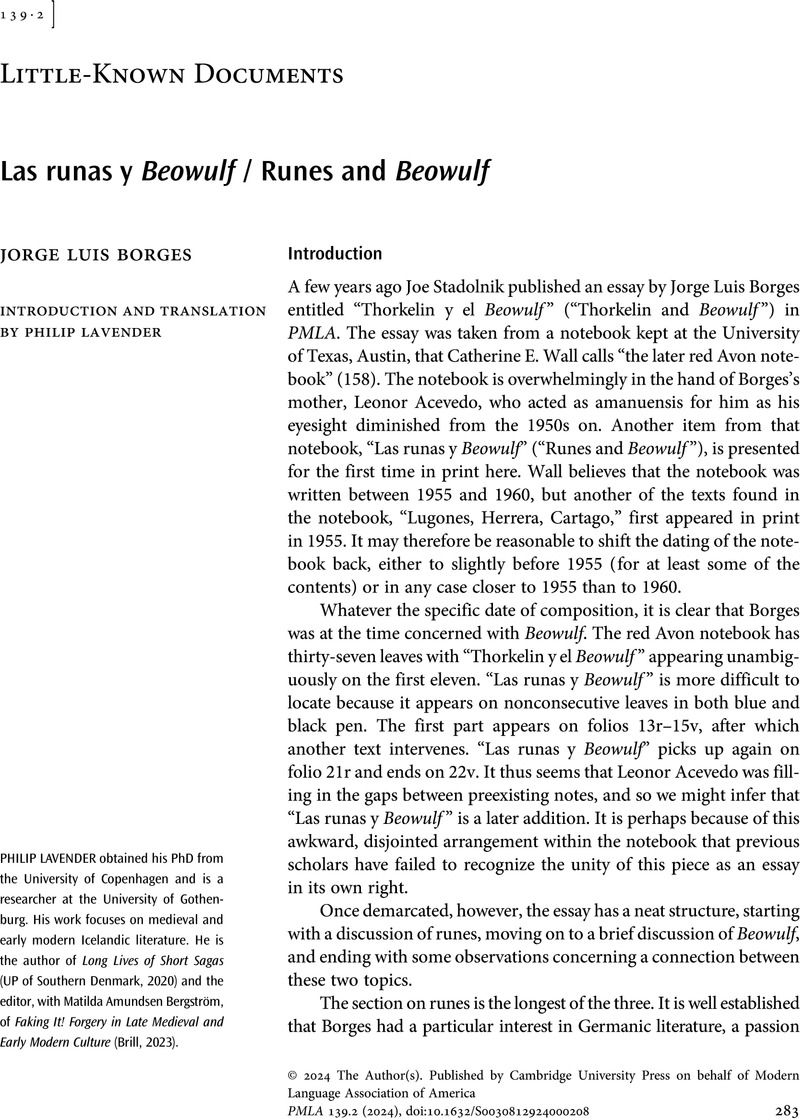No CrossRef data available.
Article contents
Las runas y Beowulf / Runes and Beowulf
Published online by Cambridge University Press: 26 July 2024
Abstract
An abstract is not available for this content so a preview has been provided. Please use the Get access link above for information on how to access this content.

- Type
- Little-Known Documents
- Information
- Copyright
- Copyright © 2024 The Author(s). Published by Cambridge University Press on behalf of Modern Language Association of America
References
Works Cited
Borges, Jorge Luis. “Thorkelin y el Beowulf / Thorkelin and Beowulf.” Introduction and translation by Stadolnik, Joe. PMLA, vol. 132, no. 2, Mar. 2017, pp. 462–70.Google Scholar
Borges, Jorge Luis, and Ingenieros, Delia. Antiguas literaturas germánicas. Fondo de Cultura Económica, 1951.Google Scholar
Borges, Jorge Luis, and Vázquez, María Esther. Literaturas germánicas medievales. Alianza Editorial, 2005.Google Scholar
Brljak, Vladimir. “Borges against the Vikings: Early Writings on Old Germanic Literature and History, 1932–46.” A Pandemonium of Medieval Borges, special issue of Old English Newsletter, edited by Toswell, M. J., vol. 47, no. 1, 2021, oenewsletter.org/OEN/issue/9_brljak.php.Google Scholar
Gosse, Edmund. “Runes, Runic Language and Inscriptions.” Encyclopedia Britannica, 11th ed., vol. 23, Cambridge UP, 1911, pp. 852–53.Google Scholar
Lavender, Philip. “‘La Bofetada,’ Serkland and the Encyclopedia Britannica: Borges Notes on Old Norse Literature.” Variaciones Borges, vol. 52, 2021, pp. 33–49.Google Scholar
Wall, Catherine E. “The Jorge Luis Borges Collection at the University of Texas at Austin.” Latin American Research Review, vol. 36, no. 3, 2001, pp. 154–62.CrossRefGoogle Scholar


